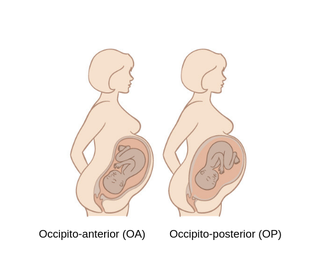An assisted vaginal birth is when your doctor uses a forceps or ventouse (vacuum cup) to help deliver your baby.
About 1 in 7 women in Ireland has an assisted birth.
Your doctor will only use these tools if they feel it is the safest way for you to give birth.
An assisted birth is sometimes called an instrumental delivery.
Why you might need an assisted birth
An assisted birth speeds up the delivery of your baby.
You might need an assisted birth if your baby is:
- getting distressed or there is a concern about their heartbeat
- not moving out of your birth canal as expected
- in an awkward position
Your doctor or midwife may also feel it's necessary if:
- you are unable to push because of a medical condition
- you are getting exhausted
- your contractions have become less intense
Your baby's position
You might need an assisted birth if your baby is lying with their back against your back. This is called the occipitio-posterior position.
The best position for birth is the occiptio-anterior position. This is where your baby's back is facing out and they are looking downwards.
Sometimes babies can be helped to rotate or turn.

Alternative to assisted birth
The alternative to an assisted birth is a caesarean section. But surgery can be difficult if you are fully dilated and in the second stage of labour. The risks of a caesarean section at this stage includes excessive bleeding.
Before an assisted birth
Your doctor or midwife will talk to you about an assisted birth.
They will explain:
- why you need one
- what tool or tools the doctor will use
- how your baby will be born
- potential risks to you and your baby
Make sure you or your birth partner ask any questions you might have.
Risks of an assisted vaginal birth
Consent
You will usually need to sign a consent form for an assisted birth. Sometimes you can give verbal consent (without signing). Your baby may be born in an operating theatre. This means you are already in the theatre if you need a caesarean section.
What happens during an assisted birth
You are usually given a local anaesthetic. This is an injection that numbs your vagina and perineum (the area between your vagina and your anus).
Or you may be offered an epidural for pain relief if you did not have an epidural in labour.
If you had an epidural during labour, the medicine can be 'topped up' before the birth.
You may need to have an episiotomy. This is where the doctor cuts the perineum to make your vaginal opening bigger. An episiotomy is most common in first-time births.
If you have an episiotomy or your perineum tears, your midwife or doctor will stitch this after your baby is born.
After the birth, a paediatrician will examine your baby.
How an episiotomy can help with birth
Tools used in an assisted birth
Your doctor will usually use either a forceps or a ventouse (vacuum cup).
There are different kinds of forceps and ventouse (vacuum cups). Your doctor or midwife will decide which is most suitable for you.
After an assisted birth
After an assisted birth, you may:
- bleed immediately after the procedure - this should settle
- feel bruised and sore
- have stinging pain when you go to the toilet
Your doctor can prescribe medicine to help with pain. Tell them if you are breastfeeding as some painkillers are not suitable. Your midwife will show you how to care for your perineum.
It can take time to recover emotionally from an assisted birth. It may help to talk to your doctor or midwife about the birth. They can answer any questions you may have.
If you need emotional support after you go home, talk to your GP or public health nurse. Tell them how your are feeling. They can give you advice and tell you about support groups in your area.
Your next birth
Having one assisted birth does not mean you will always need an assisted birth.
About 8 out of 10 women who have an assisted birth will not need one for their next child.
Why an assisted birth might not work
A forceps or ventouse birth may not work. You may need to have a caesarean birth.
An assisted birth is less likely to work if your baby is:
- lying too high in your birth canal
- lying with their back facing your back
- big
An assisted birth is also less likely to work if your body mass index (BMI) is over 30. Your BMI is a way of measuring your weight in relation to your height.
Risks of assisted birth to your baby
After an assisted birth, your baby may have:
- swelling on their scalp - this usually goes away after 24 to 48 hours
- marks on their skin - these usually fade away
Babies who have fetal distress may need more intensive care afterwards.
